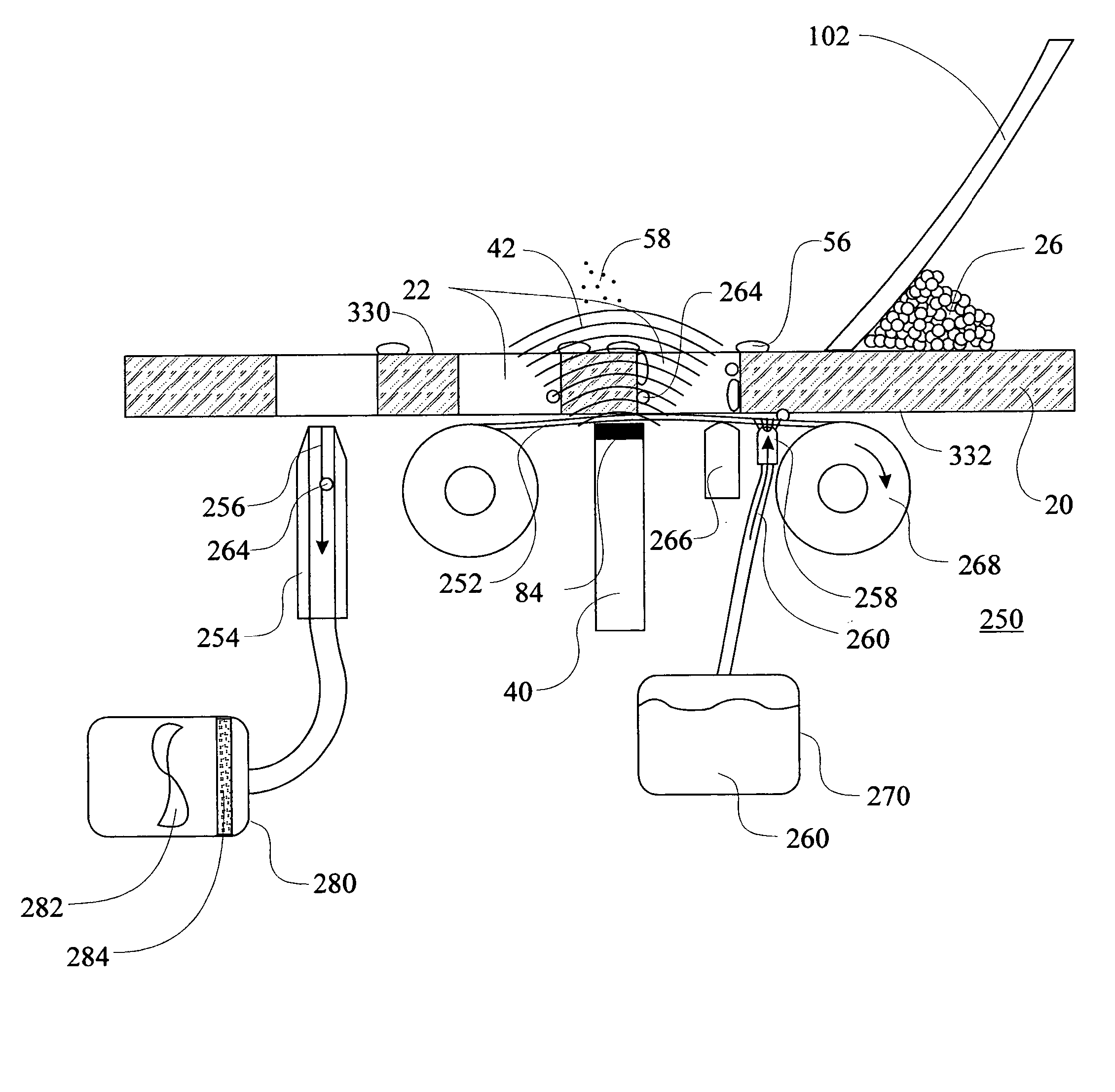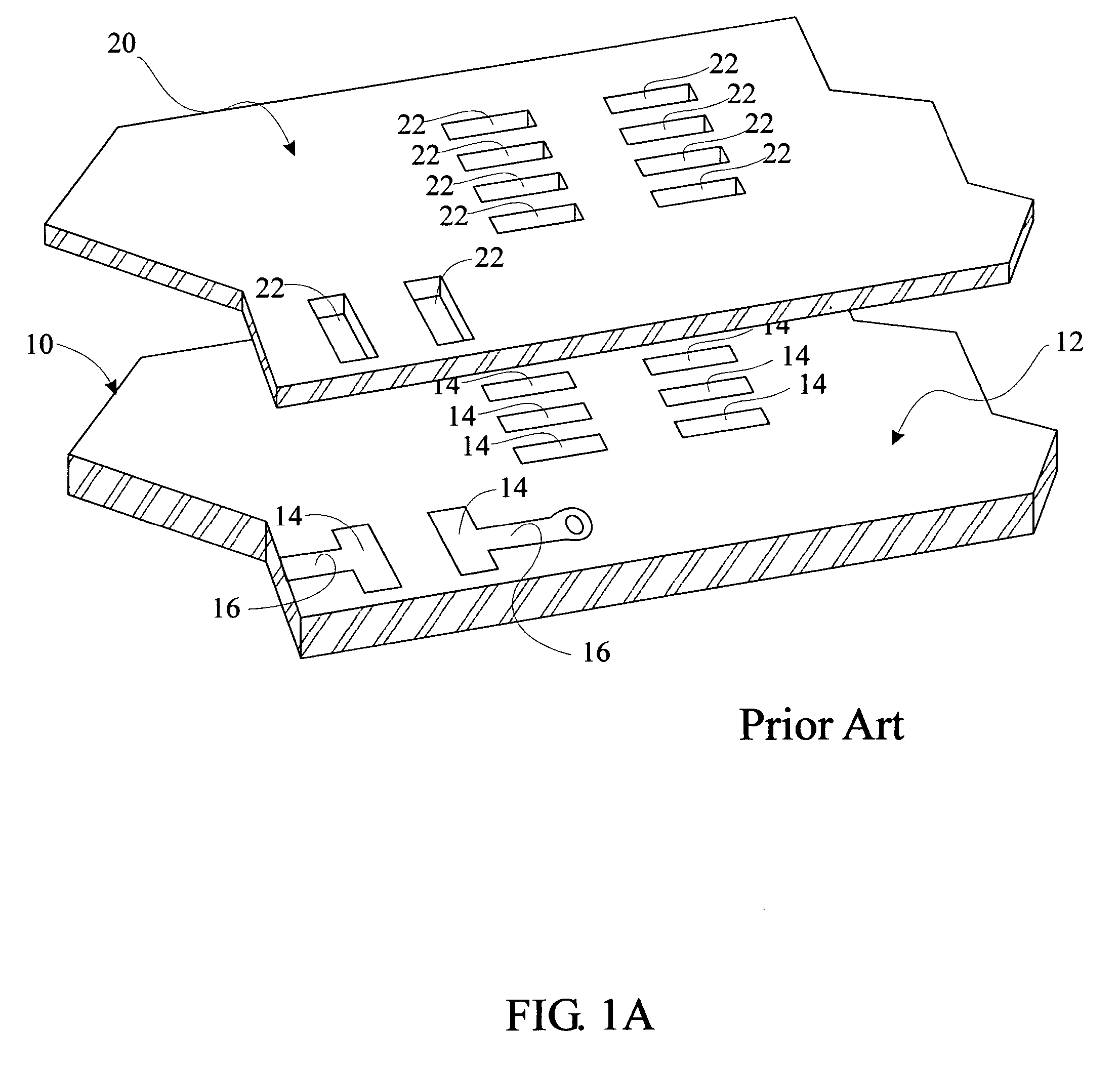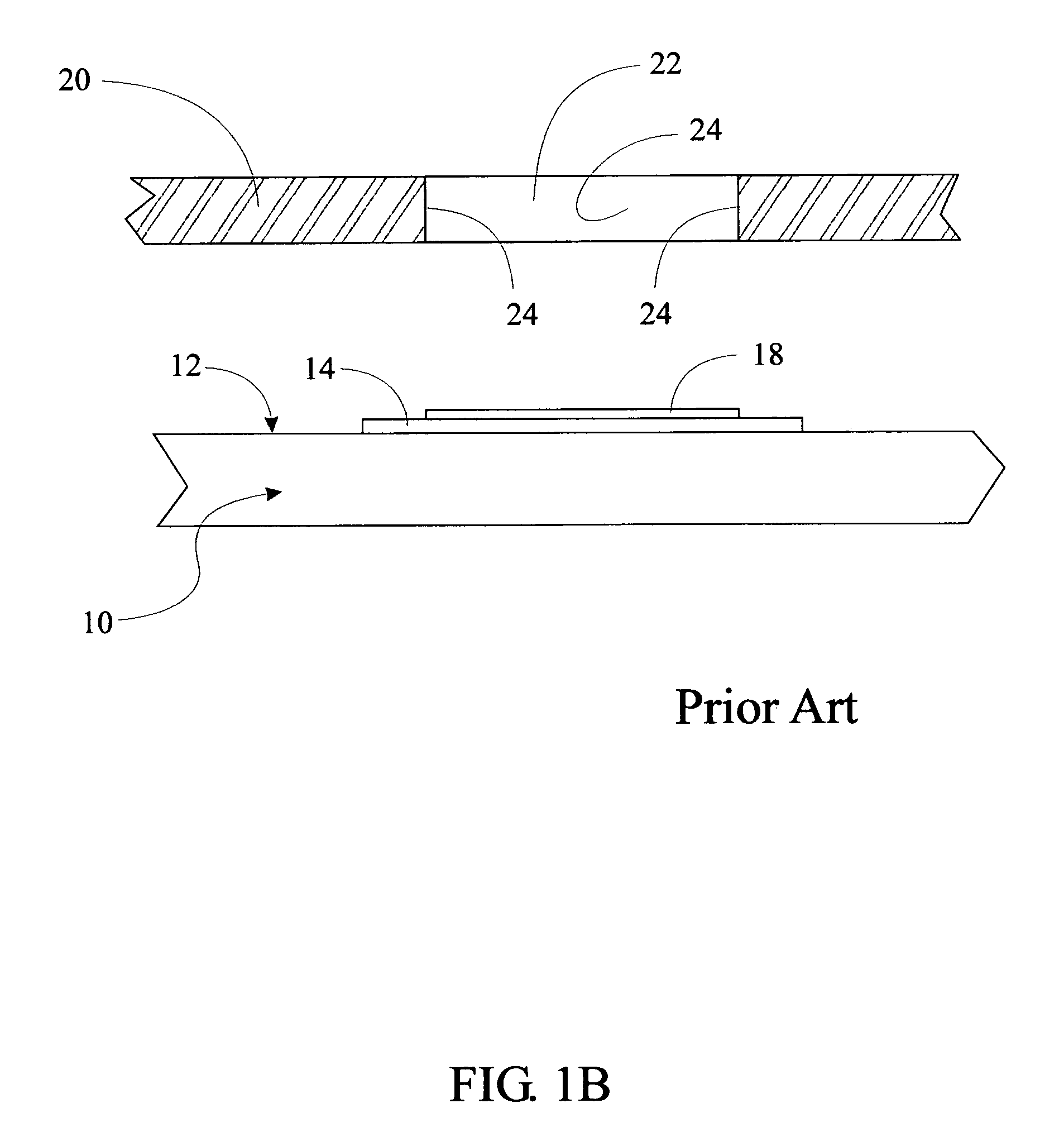Application of acoustic and vibrational energy for fabricating bumped IC die and assembly of PCA's
a vibration and vibration energy technology, applied in the direction of soldering apparatus, lighting and heating apparatus, liquid cleaning, etc., can solve the problems of high assembly cost, high assembly cost, and inability to manufacture bumped ic wafers or dies, and achieve the effect of low cost and repeatability
- Summary
- Abstract
- Description
- Claims
- Application Information
AI Technical Summary
Benefits of technology
Problems solved by technology
Method used
Image
Examples
Embodiment Construction
[0095]FIG. 3 is a flow diagram showing the preferred screen printing steps of the present invention. FIGS. 1B, 1C and 1D illustrate some of the steps in the process. The first step 60 is the fabrication of a screen or stencil 20. A stencil is a sheet like device created by fashioning apertures into a foil. Stencils may be fabricated using many methods that are known in the art including but not limited to, precision milling of a raw foil preferably using a programmable computer controlled mill, chemically etching using photodeveloped or equivalent masking images on a raw foil and applying a predetermined chemical which will corrosively remove the exposed portions of the foil, an additive process which uses a negative pattern and bonds particles of metal around the pattern to form a foil, or laser cutting using a programmable, focused laser beam to cut through the foil.
[0096]The second step 62 in the preferred screen printing process is to align a Printed Circuit Board 10 in a manner...
PUM
| Property | Measurement | Unit |
|---|---|---|
| aspect ratio | aaaaa | aaaaa |
| vibrational energy | aaaaa | aaaaa |
| vibrational | aaaaa | aaaaa |
Abstract
Description
Claims
Application Information
 Login to View More
Login to View More - R&D
- Intellectual Property
- Life Sciences
- Materials
- Tech Scout
- Unparalleled Data Quality
- Higher Quality Content
- 60% Fewer Hallucinations
Browse by: Latest US Patents, China's latest patents, Technical Efficacy Thesaurus, Application Domain, Technology Topic, Popular Technical Reports.
© 2025 PatSnap. All rights reserved.Legal|Privacy policy|Modern Slavery Act Transparency Statement|Sitemap|About US| Contact US: help@patsnap.com



